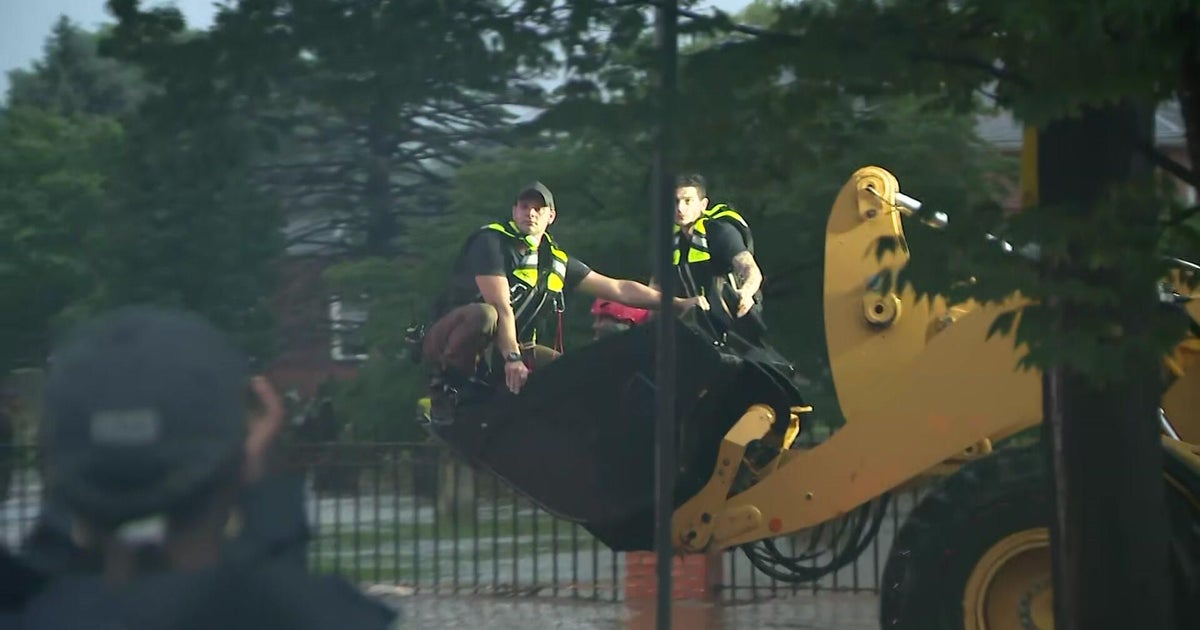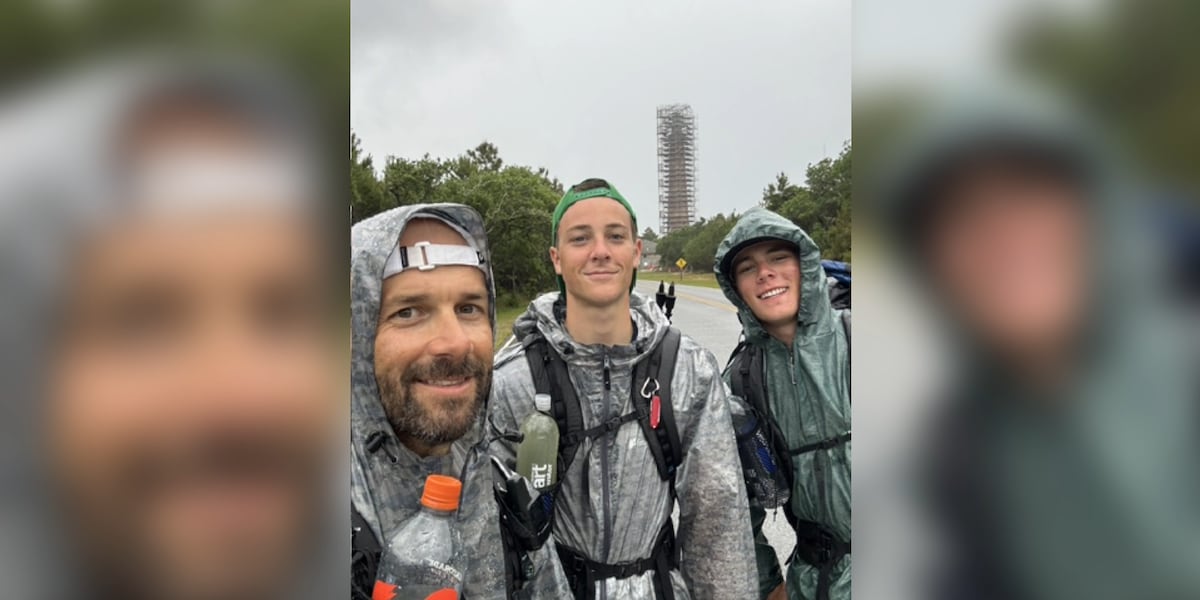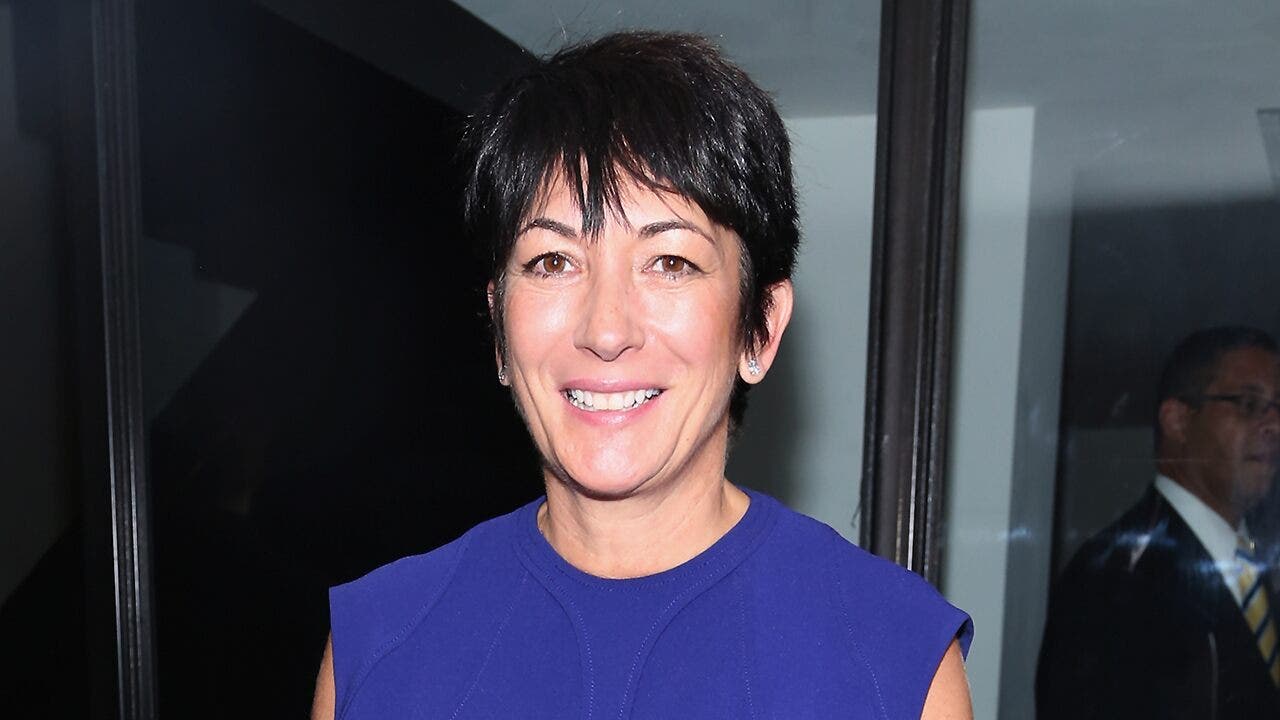Science
Button batteries pose deadly risks to children. Doctors want them to be made safer

The round batteries, small as buttons and shiny as coins, are prized for the energy they pack at their size. In households, they have become commonplace, powering remote controls, hearing aids, toys, electric tea lights, wristwatches, greeting cards that play music and other familiar items.
But doctors warn that such “button batteries” can maim and kill. Pop one into your mouth and swallow — as thousands of children do annually — and they can quickly cause devastating injuries.
A growing number of medical associations is pushing for battery manufacturers to head off the threat by making a new product: A button or “coin cell” battery that will not lead to catastrophic injuries when swallowed.
“The only real solution to the battery problem is to make the battery itself safer,” said Dr. Toby Litovitz, founder of the National Capital Poison Center.
When button batteries are lodged in the body, their electrical current breaks down water, driving up alkalinity to dangerous levels akin to bleach. Bodily tissues can begin to liquefy. Physicians say serious injury can happen within two hours, sometimes before a parent has even realized that a battery was swallowed.
As button batteries have proliferated in common items, the rate of pediatric emergency visits for battery-related injuries has more than doubled in recent decades, according to a study published in the journal Pediatrics. Some children have ended up relying on tubes to breathe or suffered massive hemorrhaging, doctors said.
“Unfortunately, these batteries cause such severe injuries so rapidly,” some of which are impossible for surgeons to repair, said Dr. Kris Jatana, surgical director of clinical outcomes at Nationwide Children’s Hospital in Ohio.
Jatana became alarmed by the risks after caring for a 2-year-old child who ended up needing a tracheostomy to breathe. “It was a moment that motivated me to try to see what we could do to prevent these injuries from happening in the first place.”
Button battery safety
Here are recommendations from Nationwide Children’s Hospital:
Some battery manufacturers have tried adding bitter coating or saliva-activated dye to tip off parents.
Reese’s Law, a federal statute named for a child who died of serious injuries after swallowing a button battery, now requires compartments for such batteries on consumer products to be harder to open and mandates child-resistant packaging for button batteries.
But advocates say more needs to be done. For instance, Litovitz said that harder-to-open packaging would not address the many injuries caused when children swallow batteries left sitting out or discarded. Among those pushing to develop safer batteries is biotech entrepreneur Bryan Laulicht.
“What makes them really great for devices is also what makes them so dangerous when you swallow them,” Laulicht said of button batteries. “They’re powerful enough to split water … which spikes the pH up to Drano levels in a matter of minutes.”
Doctors began raising alarms about the threat decades ago as more children began to suffer grave injuries. One study found that between 1985 and 2009, the percentage of button battery ingestions that led to serious or deadly injuries had risen more than sixfold.
Reese Hamsmith suffered grave injuries after swallowing a button battery and died less than two months later. Her mother, Trista Hamsmith, vowed to do everything she could to prevent other children from suffering the same fate.
(Trista Hamsmith)
Litovitz and other researchers pointed to the rising popularity of the 20-millimeter diameter lithium coin cell battery: Their analysis found that 12.6% of children under the age of 6 who ingested button batteries around that size suffered serious complications or death.
They’re “just the right size to get stuck in the esophagus of a small child, especially a child younger than four years,” Litovitz said in an email. “Further, these lithium coin cells have twice the voltage of other button cells.”
Doctors may not immediately recognize and diagnose the problem if no one realized a battery was swallowed, because the symptoms can initially look like those of other childhood ailments.
The problem has worsened over time: From 2010 through 2019, an average of more than 7,000 children and teens went to emergency rooms annually for injuries related to batteries, according to the Pediatrics study. The rate of such emergency visits had doubled compared with the period of 1990 to 2009.
Button batteries were implicated in the bulk of cases where the battery type was known. Researchers have tallied more than 70 deaths from ingesting button batteries over time, but Litovitz said the true number could be far higher because that figure only includes cases documented in medical research or the media or reported to the National Button Battery Ingestion Hotline, which stopped operating six years ago.
At Children’s Hospital Los Angeles, doctors see roughly one child a month who has been injured by a button battery, said Helen Arbogast, injury prevention program manager in its division of general pediatric surgery. Children are attracted to shiny things and pick up on the attention that adults pay to electronics, she said.
“Remote controls are really fascinating to them — the buttons, the colors — and part of their natural motor skill development is to learn how to open and close things,” Arbogast said.
She stressed that time is critical. “If a parent suspects their child having swallowed a button battery, it’s important to get them to a hospital right away.”
In Texas, Reese Hamsmith awoke one morning in 2020 congested and wheezing. Her mother, Trista Hamsmith, took the toddler to the pediatrician, who suspected croup. It wasn’t until the next day, after a Halloween night when Reese had remained ill, that her mother realized a button battery was missing from their remote control.

Reese Hamsmith suffered grave injuries after swallowing a button battery and died less than two months later.
(Trista Hamsmith)
Reese underwent emergency surgery, but the damage continued even after the battery had been removed, burning a hole through her esophagus and trachea, her mother said. In the weeks that followed, she underwent more surgeries, sedation and intubation. Less than two months after her injury, Reese died.
She was a year and a half old. After she died, “I held her again, and I promised to her that I would do everything I could that no kid would die this way again,” Trista Hamsmith said.
The Lubbock mother started a nonprofit, Reese’s Purpose, that successfully pushed for federal legislation that imposed new requirements for battery compartments, childproof packaging and warning labels. Hamsmith was glad to see those rules go into effect, but rued that such protections had not been put in place earlier.
“It shouldn’t have to take what we went through” to spur action, she said. “It definitely should not have to take someone like me screaming at the world.”
The group is also funding research into a medical device that could detect a swallowed battery without subjecting a child to radiation, which Hamsmith wants to see used whenever a child shows up with possible symptoms. And it worked with Energizer on safety features including a telltale dye that turns blue with saliva.
“The missing ingredient here … has been the ability to alert the caregiver that something has happened,” said Jeffrey Roth, Energizer’s global category leader for batteries and lights. “That’s really what ‘color alert’ does — it gives the caregiver notification that a child might have put something in their mouth that they shouldn’t have.”
Litovitz cautioned, however, that because not all batteries have the blue dye, doctors and parents should not assume that no battery was swallowed if they don’t see that color.
Roth said that in recent years, Energizer has spent tens of millions of dollars on research and other efforts surrounding button battery safety. “We believe that one day we will solve this,” he said. “But it certainly requires a breakthrough innovation.”
Laulicht, cofounder and chief executive of Landsdowne Labs, said his company has been testing an alternative battery with a different kind of casing, intended to shut down inside the body. Tests that involve sandwiching the battery between two pieces of ham do not show the kind of damage inflicted by commercially available button batteries, he said. (Ham is used as a readily available substitute for human gastrointestinal tissue, Laulicht explained.)
One of their challenges has been getting the same level of battery performance with those alterations, Laulicht said. But as a father of young children, “I would rather a battery that only lasted a year on the shelf … but didn’t kill my kid when they swallowed it.”

Science
National suicide prevention hotline plans to stop offering LGBTQ+ youth counseling. Queer advocates in L.A. wonder what's next

Amy Kane was filled with dread when she heard that the national suicide prevention lifeline would stop offering specialized crisis intervention to young LGBTQ+ Americans and end its partnership with the West Hollywood-based Trevor Project.
With the service set to end July 17, Kane, a therapist who identifies as lesbian, believes the Trump administration is sending a clear message to queer Americans: “We don’t care whether you live or die.”
Since it launched in 2022, more than 1.3 million queer young Americans struggling with a mental health crisis have dialed the 988 Suicide and Crisis Lifeline, which gave them the option to press “3” to connect with a specialist trained to address their unique life experiences. As the largest of seven LGBTQ+ contractors, the Trevor Project alone handles about half of all volume from queer callers to the 988 line.
The government’s decision is yet another broadside from an administration whose actions have left queer public health advocates and providers reeling, including at the Los Angeles LGBTQ Center, where Kane serves as director of mental health services.
Under pressure from the Trump administration, Children’s Hospital Los Angeles sent letters to families in early June saying it planned to suspend its healthcare program for transgender children and young adults in late July. The LGBTQ Center and other groups have demanded that the hospital reconsider.
Around the same time came the news about the 988 line and the Trevor Project, a nonprofit founded in 1998 by the makers of the Academy Award-winning short film “Trevor” — about a teen who attempts suicide — to address the absence of a major prevention network tailored to the needs of queer youth.
“So much has been thrown our way in the last five months,” Kane said. “It’s across the board. It’s not just mental health. We see what’s happening with gender-affirming care, dramatic cuts in research for HIV and STIs. … What’s next?”
Given L.A.’s status as a haven for LGBTQ+ people — the first permitted Pride parade took place in Hollywood in 1970 — Kane wonders whether the recent moves are an attempt to intimidate and punish Californians for being so welcoming.
Terra Russell-Slavin, left, denounced cuts to LGBT health funding as public health care becoming political as Rep. Laura Friedman, center, and Craig Thompson, CEO of the David Geffen Health Center look on at the APLA Health, Michael Gottlieb Health Center in West Hollywood last month.
(Myung J. Chun / Los Angeles Times)
The threats aren’t just coming from Washington. Kane said that she and other leaders had to lobby state legislators recently to preserve funding for a queer women’s preventive-healthcare program offered through the L.A. LGBTQ Center that was to be revoked due to a state budget shortfall. For now, the program has been given a temporary reprieve.
“It used to be this idea of, ‘Oh yeah, that’s in the red states, but I’m safe in California’ — it doesn’t feel that way anymore,” Kane said.
Staff members at the Trevor Project are scrambling to figure out how to save the jobs of about 200 counselors who are paid through the federal contract, including raising private funds to make up for the unexpected shortfall, said Mark Henson, interim vice president of advocacy and government affairs. The news couldn’t come at a worse time, given that calls nationwide are on pace to top 700,000 in 2025. That’s up from 600,000 in 2024, a spokesperson said, citing metrics from the U.S. Substance Abuse and Mental Health Services Administration.
Another 100 crisis counselors are employed and paid separately by the Trevor Project itself. They will continue taking calls through the project’s own 24/7, free crisis line, one of several options that local LGBTQ+ organizations offer. Los Angeles County’s Alternative Crisis Response has a 24/7 helpline at (800) 854-7771 that also provides culturally sensitive support services.
But Alex Boyd, the Trevor Project’s director of crisis intervention, said he isn’t sure how his organization can make up for the loss of the nationwide visibility and federal support that the 988 partnership affords them.
LGBTQ+ young people are more than four times as likely to attempt suicide than their peers, according to the Trevor Project. Its 2024 survey found that in California, 35% of LGBTQ+ young people seriously considered taking their own lives and that 11% of respondents had attempted suicide in the previous year.
In defending the decision to stop working with the Trevor Project at a House budget hearing in May, Health and Human Services Secretary Robert F. Kennedy Jr. said that while Trump supports the 988 Suicide & Crisis Lifeline in general, “We don’t want to isolate different demographics and polarize our country.”
The big question, Boyd said, is will young LGBTQ+ Americans who already feel shunned or misunderstood still trust a suicide prevention line that no longer offers counselors they can easily relate to?
A one-size-fits-all approach doesn’t work when it comes to people in emotional and mental distress, Boyd said.
He fears the worst.
“The fact that such a significant amount of our capacity for impact has now been stripped away — there is no operational way in order to navigate through a moment like this that doesn’t result, in at least the short term, in a loss of life.”
Counselors at the Trevor Project hear the anguish over the anti-LGBTQ+ backlash in the voices of young callers seeking help through the lifeline, Boyd said. “The statements we are hearing are: ‘Our government doesn’t support me. The government is actively erasing my experience from the national conversation.’ ”
“Increasingly, the biggest thread that we see from young people reaching out to us is this idea that it is already difficult to be a young person in the world — this is another layer that we’re adding onto children’s lives,” Boyd said. “They’re coming to us saying they’re not sure how they’re going to be able to navigate through more years of this before they get some level of autonomy and agency and find some sense of safety.”
Along with a host of executive actions signed by the president, thousands of bills targeting the LGBTQ+ community have been introduced in state legislatures, in cities and in school districts in California and around the country, including calls to ban books that mention same-sex relationships and gender identity, remove the Pride flag from government buildings and kick trans athletes off of sports teams.
Adding to the strain on the queer community, Trump’s self-described “Big Beautiful Bill,” recently passed in both houses in Congress, cuts public health funding for low-income Americans who receive Medicaid. LGBTQ+ Americans are twice as likely to rely on Medicaid to receive their health care than other Americans, said Alexandra Curd, a staff policy attorney at the national advocacy group Lambda Legal.
Over 40% of nonelderly U.S. adults living with HIV depend on the federal program for their healthcare needs compared to 15% for the general population, according to KFF. Many recipients rely nonprofit organizations funded by federal grants to get HIV and STI screenings and receive HIV prevention medications such as PREP and PEP, Curd said.
Because of the Medicaid cuts and the prospect of increased difficulty in accessing preventive care and emotional support, “We’re going to possibly be seeing rising infections rates for HIV,” she said.
Curd said a recent spike in HIV rates among Latino men could only worsen. The Centers for Disease Control and Prevention officials have cited a lack of adequate funding, racial bias, language barriers and mistrust of the medical system among the reasons that gay and bisexual Latino men account for a disproportionate percentage of new HIV cases.
Lambda Legal’s help desk has already received more requests for assistance with health care, employment and housing discrimination in the first half of 2025 than in all of 2024, with the most pressing need coming from trans and nonbinary callers.
One piece of good news for L.A. came recently when Rep. Laura Friedman (D–West Hollywood) announced that the Trump administration had restored more than $19 million in federal grants for HIV and STI prevention and tracking that were earmarked for the L.A. County Department of Public Health but slashed by the CDC. Friedman said she and others spoke out against the cut were able to secure an extra $338,019 in federal funding for the new fiscal year starting June 1.
But it’s hard for healthcare organizations to celebrate given that vital funds for mental health and HIV programs were targeted in the first place.
Manny Zermeño, a behavioral health specialist at the Long Beach office of another queer community service organization, APLA Health, senses the distress in his clients. “There is fear, sadness and also with those feelings, it’s natural to have some anger and confusion,” Zermeño said.
The L.A.-based nonprofit focuses on providing free and affordable dental, medical, counseling and other services for queer people 18 and over. It was founded in 1982 as AIDS Project Los Angeles. Back then, a small team of volunteers worked a telephone hotline in the closet of the Los Angeles Gay and Lesbians Community Service Center, fielding calls from panicked residents seeking answers about what was then a fatal disease for which there was no treatment.
The organization operated the first dental clinic in the U.S. catering to AIDS patients out of a trailer in West Hollywood. After movie star Rock Hudson announced he had AIDS in 1985, the organization galvanized support among Angelenos by hosting the first-ever AIDS Walk fundraiser at Paramount Studios, according to its website.
Kane and leaders of other community organizations in L.A. said they would rally once again, this time to assist the Trevor Project.
“All of us who have boots on the ground — you’ll literally have to drag us out by our ankles in order to not provide care to our community,” Kane said. “I don’t believe that queer kids will not have access to resources, because we won’t allow it.”
Science
Cyborg jellyfish could help uncover the depths and mysteries of the Pacific Ocean

For years, science fiction has promised a future filled with robots that can swim, crawl and fly like animals. In one research lab at Caltech, what once felt like distant imagination is becoming reality.
At first glance, they look like any other moon jellyfish — soft-bodied, translucent and ghostlike, as their bell-shaped bodies pulse gently through the water. But look closer, and you’ll spot a tangle of wires, a flash of orange plastic, and a sudden intentional movement.
These are no ordinary jellies. These are cyborgs.
At the Dabiri Lab at Caltech, which focuses on the study of fluid dynamics and bio-inspired engineering, researchers are embedding microelectric controllers into jellyfish, creating “biohybrid” devices. The plan: Dispatch these remotely controlled jellyfish robots to collect environmental data at a fraction of the cost of conventional underwater robots — and potentially redefine how we monitor the ocean.

Caltech graduate student, Noa Yoder, a graduate student is one of the members of a team developing cyborg jellyfish, using a device made up of a container filled with sensors and two electrodes that attach to the jellyfish’s muscles.
“It fills the niche between high-tech underwater robots and just attaching sensors to animals, which you have little control over where they go,” said Noa Yoder, a graduate student in the Dabiri Lab. “These devices are very low cost and it would be easy to scale them to a whole swarm of jellyfish, which already exist in nature.”
Jellyfish are perfect for the job in other ways: Unlike most marine animals, jellyfish have no central nervous system and no pain receptors, making them ideal candidates for cybernetic augmentation. They also exhibit remarkable regenerative abilities, capable of regrowing lost body parts and reverting to earlier life stages in response to injury or stress — they can heal in as quickly as 24 hours after the removal of a device.
The project began nearly a decade ago with Nicole Xu, a former graduate student in the Dabiri Lab who is now a professor at the University of Colorado Boulder. Her research has demonstrated that electrodes embedded into jellyfish can reliably trigger muscle contractions, setting the stage for field tests and early demonstrations of the device. Later, another Caltech graduate student, Simon Anuszczyk, showed that adding robotic attachments to jellyfish — sometimes even larger than the jellyfish themselves — did not necessarily impair the animals’ swimming. And in fact, if designed correctly, the attachments can even improve their speed and mobility.
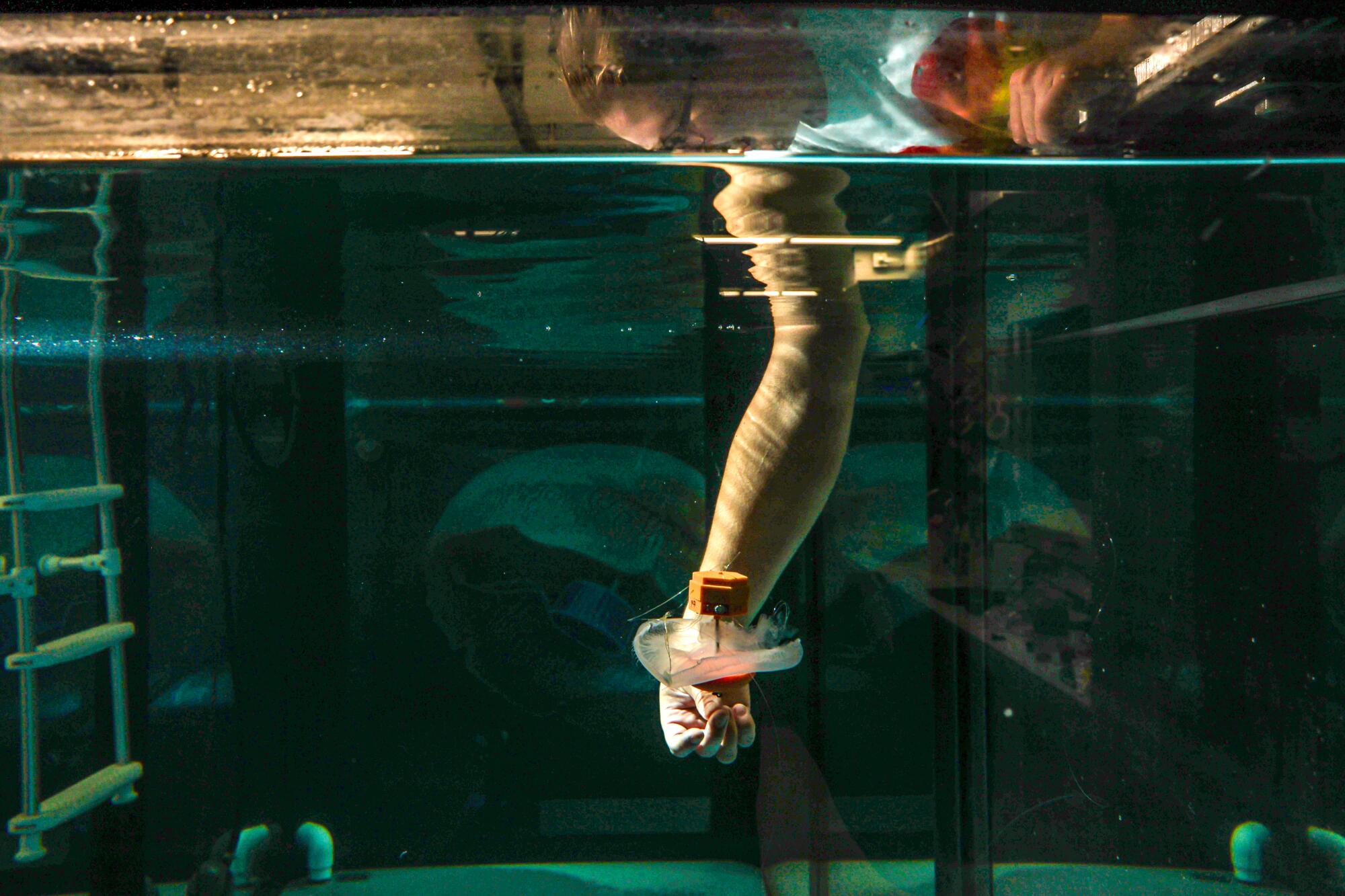
The device allows the scientists to pilot the jellyfish through ocean waters and record measurements of pH, temperature, salinity, etc.
There have been several iterations of the robotic component, but the general concept of each is the same: a central unit which houses the sensors used to collect information, and two electrodes attached via wires. “We attach [the device] and send electric signals to electrodes embedded in the jellyfish,” Yoder explained. “When that signal is sent, the muscle contracts and the jellyfish swims.” By triggering these contractions in a controlled pattern, researchers are able to influence how and when the jellyfish move — allowing them to navigate through the water and collect data in specific locations.
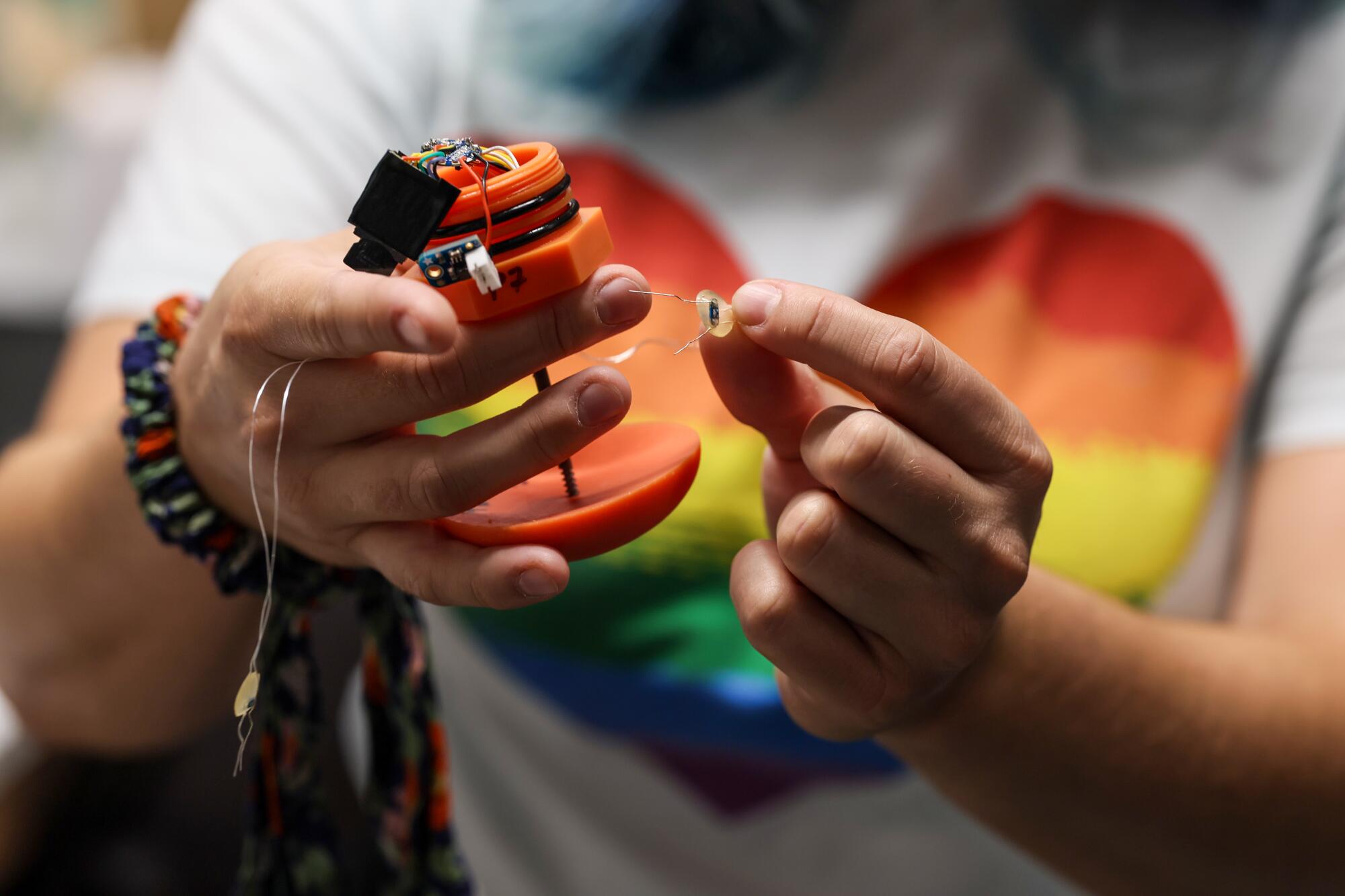
These cyborg devices offer a cheaper (and more sustainable) option for marine research, making it more widely accessible for anyone looking to study the ocean.
The team hopes this project will make ocean research more accessible — not just for elite institutions with multimillion-dollar submersibles, but for smaller labs and conservation groups as well. Because the devices are relatively low-cost and scalable, they could open the door for more frequent, distributed data collection across the globe.
The latest version of the device includes a microcontroller, which sends the signal to stimulate swimming, along with a pressure sensor, a temperature sensor and an SD card to log data. All of which fits inside a watertight 3D-printed structure about the size of a half dollar. A magnet and external ballast keep it neutrally buoyant, allowing the jellyfish to swim freely, and properly oriented.
One limitation of the latest iteration is that the jellyfish can only be controlled to move up and down, as the device is weighted to maintain a fixed vertical orientation, and the system lacks any mechanism to steer horizontally. One of Yoder’s current projects seeks to address this challenge by implementing an internal servo arm, a small motorized lever that shifts the internal weight of the device, enabling directional movement and mid-swim rotations.
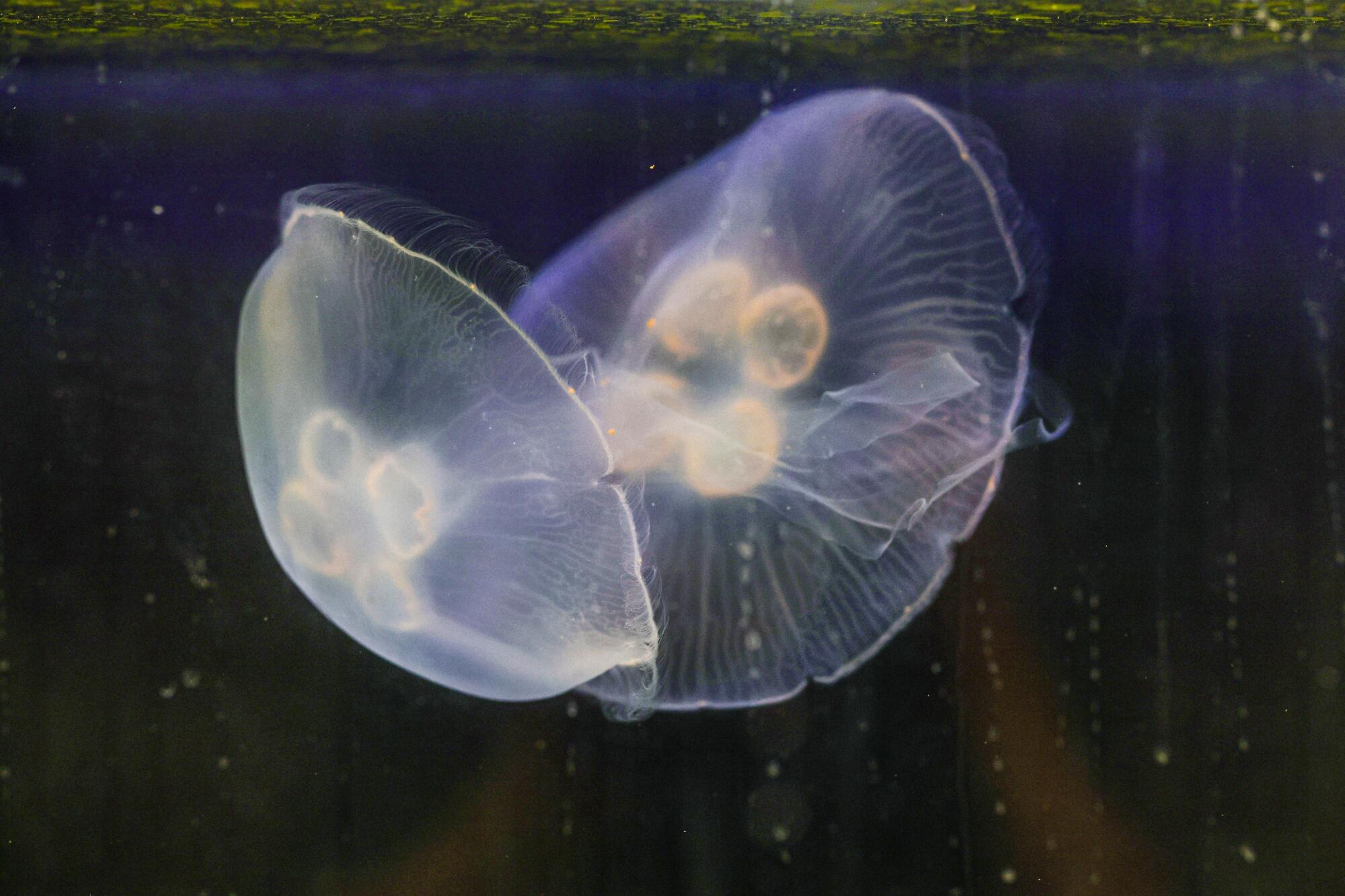
Unlike most marine animals, jellyfish have no central nervous system and no pain receptors, making them ideal candidates for cybernetic augmentation.
But perhaps the biggest limitation is the integrity of the device itself. “Jellyfish exist in pretty much every ocean already, at every depth, in every environment,” said Yoder.
To take full advantage of that natural range, however, the technology needs to catch up. While jellyfish can swim under crushing deep-sea pressures of up to 400 bar — approximately the same as having 15 African elephants sit in the palm of your hand — the 3D-printed structures warp at such depths, which can compromise their performance. So, Yoder is working on a deep-sea version using pressurized glass spheres, the same kind used for deep-sea cabling and robotics.
Other current projects include studying the fluid dynamics of the jellyfish itself. “Jellyfish are very efficient swimmers,” Yoder said. “We wanted to see how having these biohybrid attachments affects that.” That could lead to augmentations that make future cyborg jellyfish even more useful for research.
The research team has also begun working with a wider range of jellyfish species, including upside-down Cassiopeia jellies found in the Florida Keys and box jellies native to Kona, Hawaii. The goal is to find native species that can be tapped for regional projects — using local animals minimizes ecological risk.
“This research approaches underwater robotics from a completely different angle,” Yoder said. “I’ve always been interested in biomechanics and robotics, and trying to have robots that imitate wildlife. This project just takes it a step further. Why build a robot that can’t quite capture the natural mechanisms when you can use the animal itself?”
Science
Trump administration sues California over cage-free egg and animal welfare law

The Trump administration has sued California over the state’s voter-approved animal welfare law, which protects hens, pigs and calves from being kept in small cages, claiming the law has driven up egg prices and violates federal farming laws and regulations.
“California has contributed to the historic rise in egg prices by imposing unnecessary red tape on the production of eggs,” wrote lawyers in the lawsuit, which was filed in U.S. District Court in Los Angeles on Wednesday.
California Gov. Gavin Newsom and Atty. Gen. Rob Bonta vowed to defend the state law.
“Pointing fingers won’t change the fact that it is the President’s economic policies that have been destructive. We’ll see him in court,” Bonta said in a statement.
California’s animal-welfare law was approved by voters as Proposition 12 in 2018. The law was upheld by the U.S. Supreme Court in 2023.
“In a functioning democracy, policy choices like these usually belong to the people and their elected representatives,” wrote Justice Neil M. Gorsuch, a Trump appointee, in the lead opinion. He said that while many state laws may have economic effects in other states, they are only in violation of the Constitution if they were written with the intent to interfere with interstate commerce.
The Department of Justice contends the California law preempts federal laws, including the Egg Products Inspection Act, and that no state has the right to institute its own standards on the production or “quality, condition, weight, quantity or grade” of eggs that differs from those set by the federal government.
The law has been repeatedly challenged by the National Pork Producers Council and others. Just last month, the Supreme Court declined to accept a petition for certiorari from the Iowa Pork Producers Council.
In the suit filed Wednesday, the Justice Department contends that California’s egg standards “do not advance consumer welfare” and are “not based in specific peer-reviewed published scientific literature or accepted as standards within the scientific community to reduce human food-borne illness … or other human or safety concerns.”
Egg prices soared earlier this year, soon after Trump took office. Most experts pointed to the H5N1 bird flu epidemic as the cause of the spike, as millions of egg-laying chickens across the nation were euthanized to prevent the spread.
Prices have since moderated as the outbreak has diminished. In the last 30 days, there has been only one reported commercial flock infection in Pennsylvania. The birds were not egg layers.
In February, the U.S. Department of Agriculture’s Secretary Brooke Rollins, penned an op-ed in the Wall Street Journal suggesting the Trump administration would target the law.
California egg producers have in the past opposed changing the law.
Bill Mattos, president of the California Poultry Federation, said in an interview in February that California egg farmers had spent millions of dollars to upgrade and adapt their farms. Reversing the law would put California poultry farmers — and all the other egg producers that sell to California — at a huge economic disadvantage by requiring them to invest millions more dollars to buy cages and re-adapt their facilities for such operations.
Animal welfare advocates say the lawsuit is short-sighted and has the potential to hurt California’s egg-laying industry.
“With this ill-considered legal action, the Administration is dropping a set of stink bombs into the bosom of the egg industry,” said Wayne Pacelle, president of Animal Wellness Action and the Center for a Humane Economy.
He said California egg farmers are still recovering from the bird flu outbreak, and this suit, if successful, would disrupt the still fragile supply chain “and provide an opening for egg farmers from Mexico — which have no animal welfare standards at all — to access the California market.”
-

 Politics1 week ago
Politics1 week agoVideo: Trump Signs the ‘One Big Beautiful Bill’ Into Law
-

 Education1 week ago
Education1 week agoOpinion | The Ugliness of the ‘Big, Beautiful’ Bill, in Charts
-

 World1 week ago
World1 week agoRussia-Ukraine war: List of key events, day 1,227
-

 News4 days ago
News4 days agoVideo: Trump Compliments President of Liberia on His ‘Beautiful English’
-

 Technology1 week ago
Technology1 week agoCyberpunk Edgerunners 2 will be even sadder and bloodier
-
Business1 week ago
Companies keep slashing jobs. How worried should workers be about AI replacing them?
-

 News1 week ago
News1 week agoTexas Flooding Map: See How the Floodwaters Rose Along the Guadalupe River
-

 News1 week ago
News1 week agoDeath toll from Texas floods rises to 24 as search underway for more than 20 girls unaccounted for | CNN


